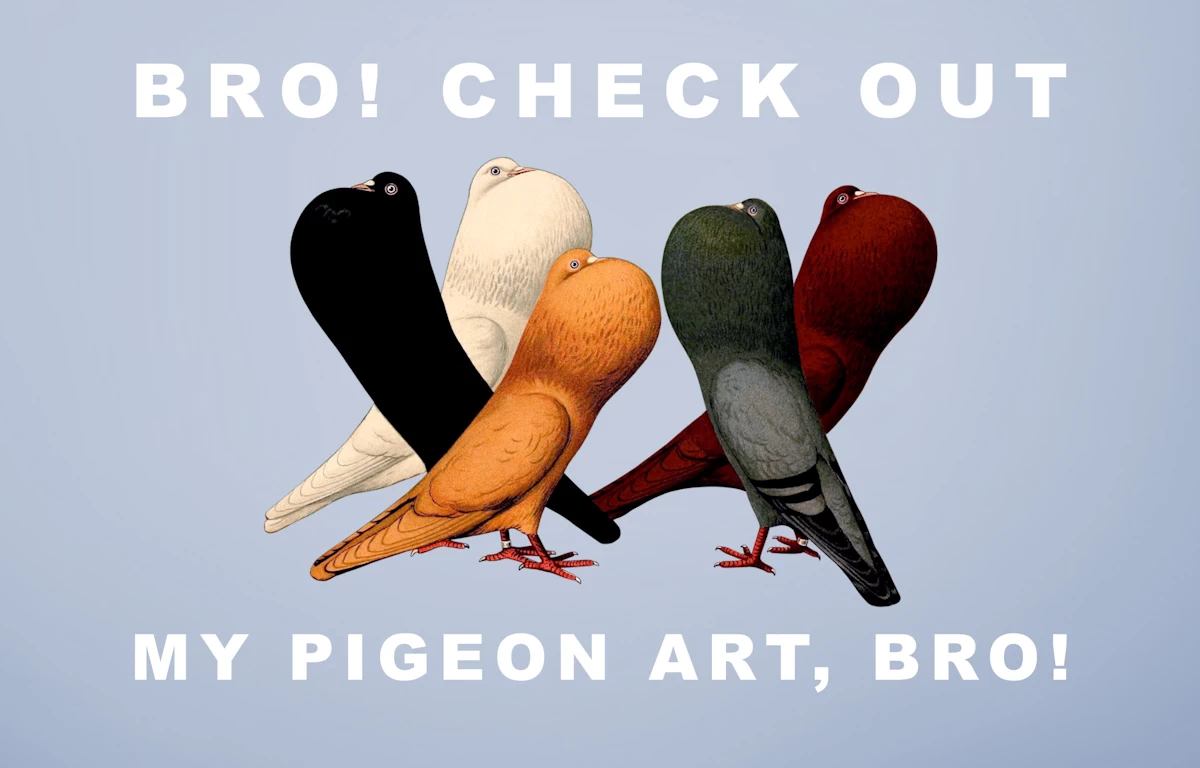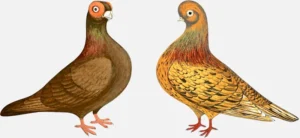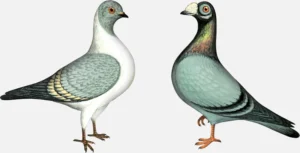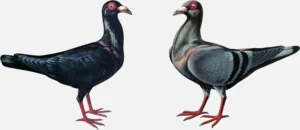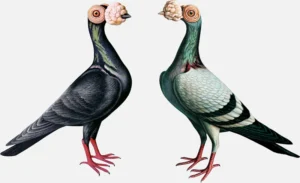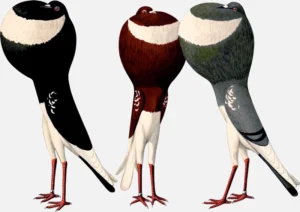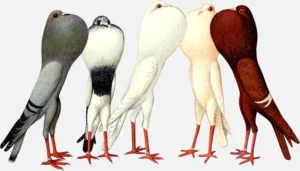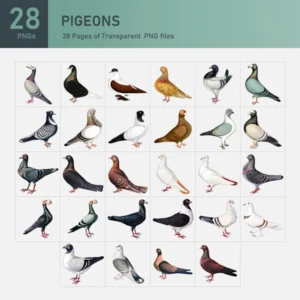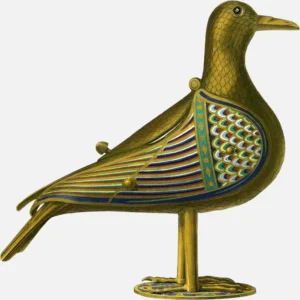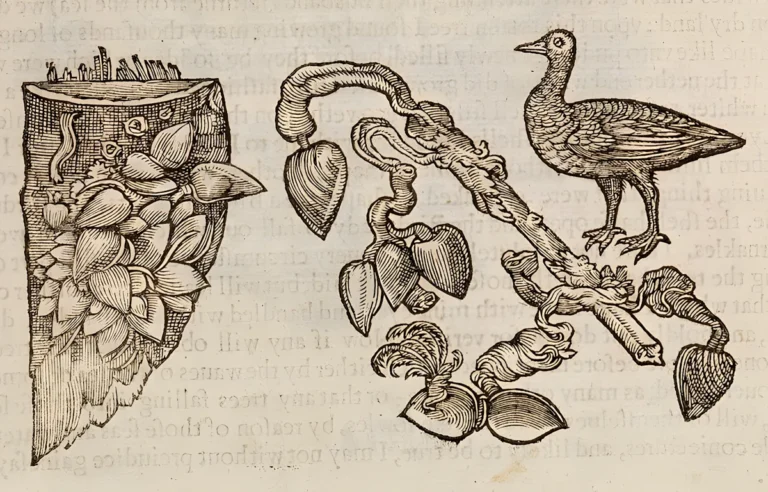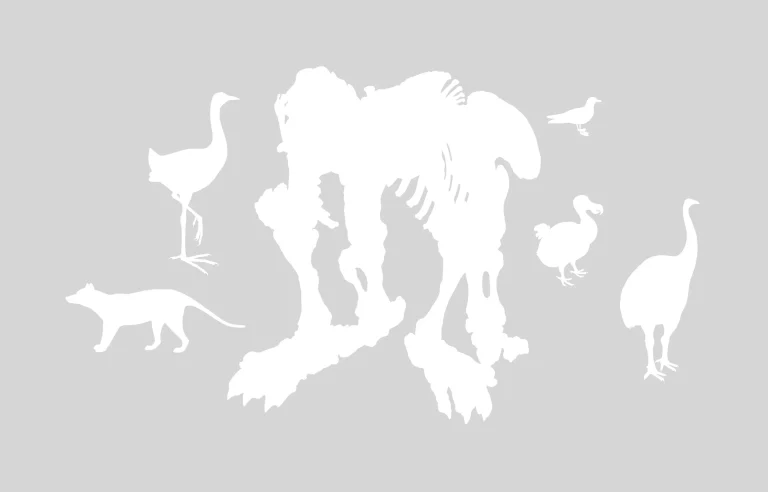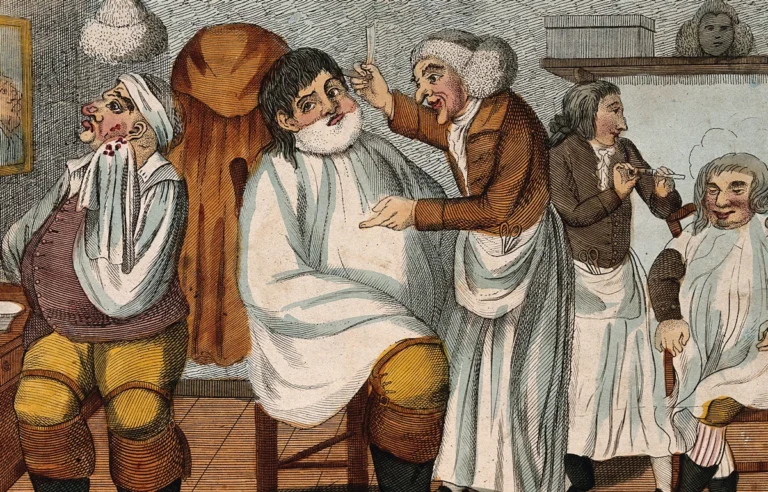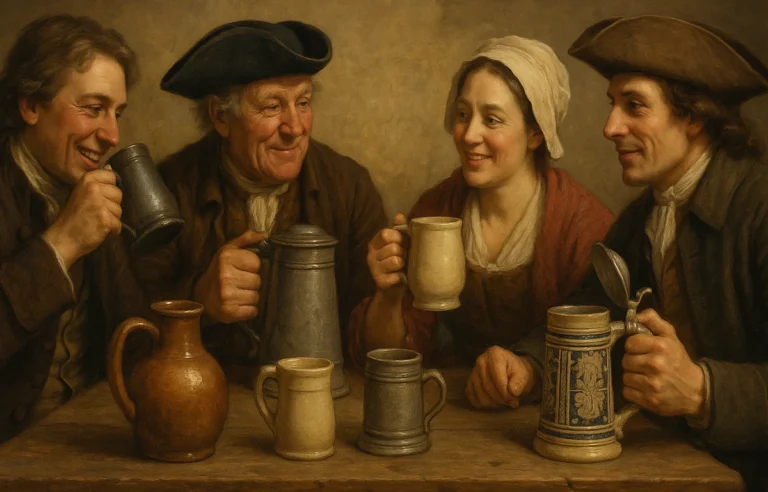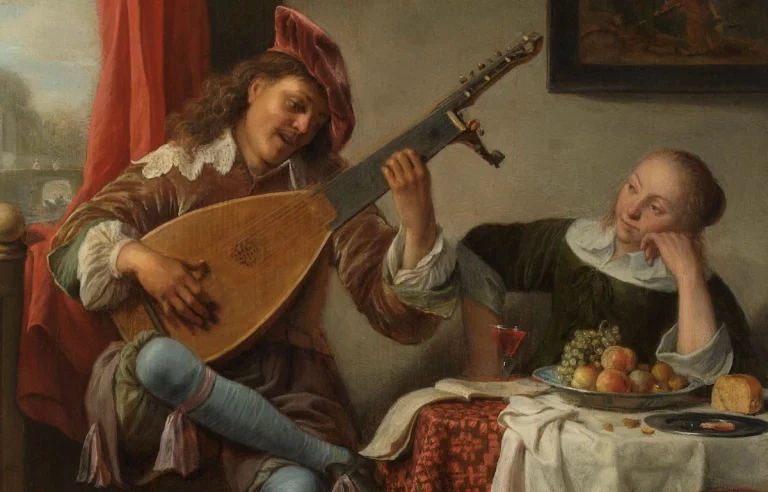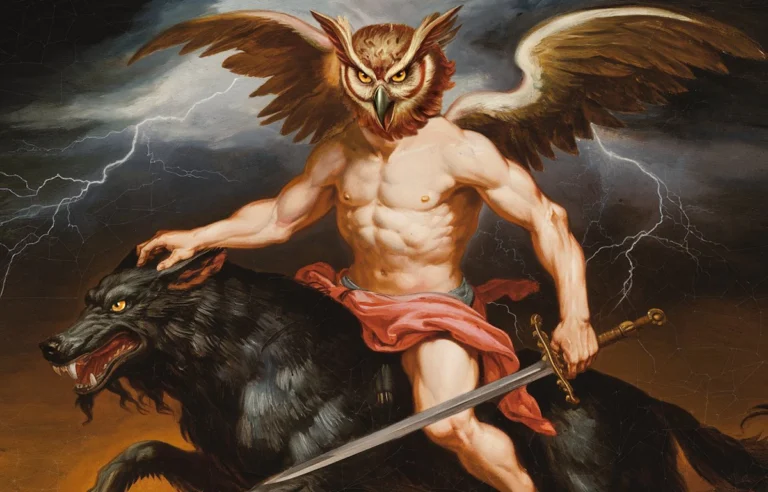Vintage Pigeon Illustrations: A Glimpse into Avian Beauty and Breeding
Pigeons, often overlooked in the modern urban landscape, have a storied history as cherished pets, symbols of peace, and marvels of selective breeding. The fascination with pigeons, particularly fancy pigeons, reached its zenith in the 19th and early 20th centuries. This era saw the publication of several comprehensive and beautifully illustrated books dedicated to these birds. Among the most notable are James C. Lyell’s Fancy Pigeons (1887), Gustav Prütz’s Illustrirtes Mustertauben-Buch (1884), and Emil Schachtzabel’s Prachtwerk sämtlicher Tauben-rassen (1906). These works not only document the myriad varieties of pigeons but also serve as historical artifacts that showcase the artistic and scientific endeavors of their time.
General Facts about Pigeons
Pigeons, also known as rock doves, are among the oldest domesticated birds, with a relationship with humans that dates back thousands of years. They are renowned for their intelligence, homing ability, and adaptability to diverse environments.
Diet
Pigeons have a varied diet that primarily consists of seeds, grains, and fruits. In urban areas, they often scavenge for food scraps. Their diet is supplemented with small insects and worms, providing essential proteins. Pigeons are also known to consume grit, which aids in digestion by grinding food in their gizzards.
Behavior
Pigeons are social birds that typically live in flocks. They exhibit complex behaviors, including courtship displays where males puff up their feathers, coo, and strut to attract females. Pigeons are monogamous and form strong pair bonds, often mating for life.
Their renowned homing ability is a result of their excellent navigational skills, which involve a combination of visual landmarks, the Earth’s magnetic field, and the sun’s position. This ability has been harnessed historically for message carrying, most notably during wartime when pigeons played crucial roles in communication.
James C. Lyell's "Fancy Pigeons" (1887)
James C. Lyell’s Fancy Pigeons is a seminal work in the field of pigeon breeding and management. Published in 1887, this book provides detailed descriptions of every known variety of fancy pigeons at the time, along with practical advice on their breeding and care.
Illustrations and Content
Lyell’s book is renowned for its meticulous illustrations, which capture the elegance and diversity of pigeon breeds. The illustrations, often hand-colored, depict pigeons in various poses, highlighting their unique plumage patterns, body shapes, and colors. These images were not only aesthetically pleasing but also served as crucial references for breeders striving to achieve specific standards.
The book categorizes pigeons into several classes, such as Tumblers, Pouters, Carriers, and Fantails, each with distinct characteristics. For instance, the illustrations of Tumblers showcase their compact bodies and short beaks, while Pouters are depicted with their prominent, inflated crops. The attention to detail in these illustrations reflects the high level of expertise and dedication of both the artists and breeders of the time.
Significance
Fancy Pigeons remains a valuable resource for modern pigeon enthusiasts and historians alike. It provides insight into the breeding practices of the 19th century and documents varieties that may have since evolved or disappeared. The book’s illustrations continue to inspire admiration for the artistry involved in both pigeon breeding and book illustration.
Gustav Prütz's "Illustrirtes Mustertauben-Buch" (1884)
Gustav Prütz’s Illustrirtes Mustertauben-Buch (Illustrated Model Pigeon Book), published in 1884, is another cornerstone in the literature on fancy pigeons. Prütz, a German ornithologist and pigeon fancier, compiled a comprehensive guide that encompasses the entirety of pigeon breeding knowledge of his era.
Illustrations and Content
Prütz’s book is distinguished by its extensive and detailed illustrations, which are among the finest of the period. These illustrations, often lithographs, present pigeons in a variety of breeds and colors, each rendered with remarkable precision. The depictions include not only the birds themselves but also anatomical details, such as the structure of feathers and the shape of beaks and feet.
The content of the book covers all aspects of pigeon breeding, from the selection of breeding pairs to the care of young pigeons. Prütz’s systematic approach is evident in the way the book is organized, with sections dedicated to different pigeon breeds and their specific requirements. The illustrations complement the text by providing visual references that enhance the reader’s understanding of the nuances of each breed.
Significance
Illustrirtes Mustertauben-Buch is a testament to the scholarly rigor and artistic talent of its time. The book’s illustrations are not only valuable for their beauty but also for their accuracy, which has made them indispensable to pigeon breeders and historians. Prütz’s work has contributed significantly to the preservation and appreciation of pigeon breeds, many of which owe their continued existence to the detailed documentation provided in this book. of pigeon breeding, from the selection of breeding pairs to the care of young pigeons. Prütz’s systematic approach is evident in the way the book is organized, with sections dedicated to different pigeon breeds and their specific requirements. The illustrations complement the text by providing visual references that enhance the reader’s understanding of the nuances of each breed.
Emil Schachtzabel's "Prachtwerk sämtlicher Tauben-rassen" (1906)
Emil Schachtzabel’s Prachtwerk sämtlicher Tauben-rassen (The Magnificent Work of All Pigeon Breeds), published in 1906, is a monumental work that represents the culmination of decades of pigeon breeding and illustration.
Illustrations and Content
Schachtzabel’s book stands out for its lavish and vibrant illustrations, which are considered some of the finest examples of avian art. The illustrations are notable for their lifelike quality and the use of rich, vivid colors that bring each pigeon breed to life. These images were produced using advanced printing techniques of the time, allowing for greater detail and color accuracy.
The book provides an exhaustive account of pigeon breeds, including detailed descriptions of their physical characteristics, breeding habits, and care requirements. Schachtzabel’s attention to detail is evident in the precise depiction of each breed’s unique features, such as the frilled feathers of the Jacobin or the exaggerated beak of the Carrier pigeon.
Significance
Prachtwerk sämtlicher Tauben-rassen is celebrated for its artistic and scientific value. The book’s illustrations are masterpieces of ornithological art, and its comprehensive content reflects the pinnacle of pigeon breeding knowledge at the turn of the 20th century. Schachtzabel’s work has had a lasting impact on the field of ornithology and pigeon breeding, and it continues to be a revered source for enthusiasts and scholars.
Conclusion
The works of James C. Lyell, Gustav Prütz, and Emil Schachtzabel are invaluable contributions to the world of fancy pigeons. Their meticulously illustrated books offer a window into the rich history of pigeon breeding, showcasing the beauty and diversity of these remarkable birds. The illustrations in these works not only serve as artistic treasures but also as essential references for breeders and historians. Through their dedication and expertise, Lyell, Prütz, and Schachtzabel have ensured that the legacy of fancy pigeons and the art of their illustration will continue to be appreciated for generations to come.
In addition to their historical and artistic value, these books remind us of the fascinating nature of pigeons themselves. Their varied diet, complex social behaviors, and remarkable homing abilities make them worthy of the attention they received from these dedicated ornithologists and artists. The vintage pigeon illustrations not only capture the physical beauty of these birds but also reflect the rich and multifaceted relationship between pigeons and humans.
Bonus Trivia
Curious objects called Peristeriums or Eucharistic doves were hung over the altar in medieval churches. They resembled doves and contained a flap in the back that could be opened to house consecrated hosts. Not only was this a practical measure as it kept the hosts safe from mice, but it also created an impressive display.


